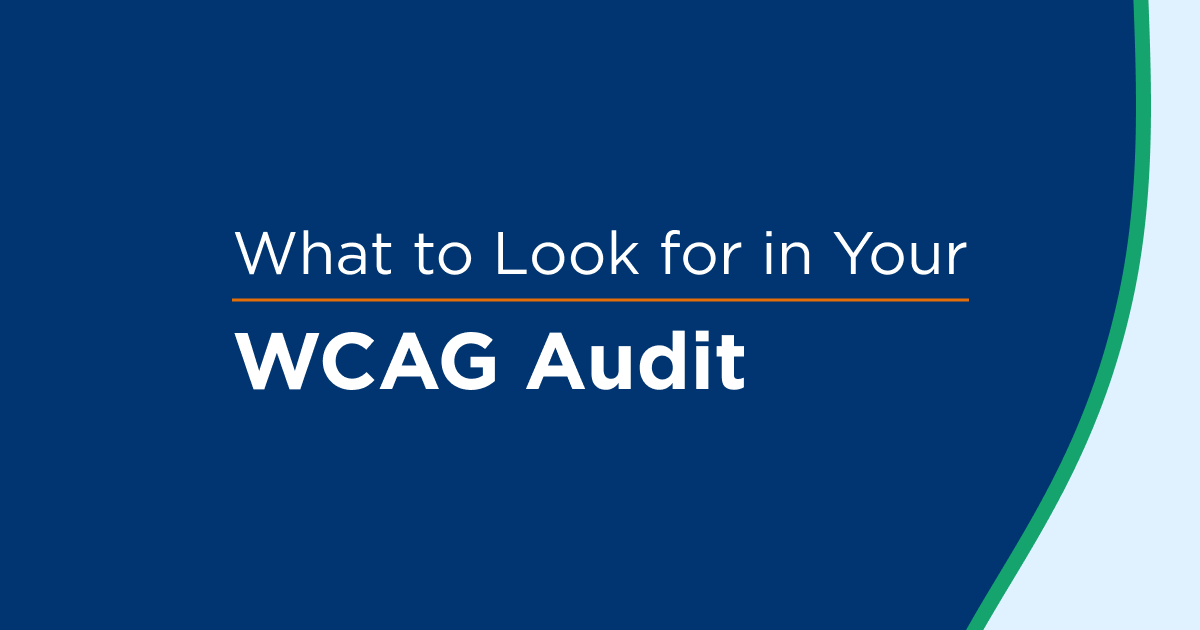Ensuring your web content is accessible to all has never been as critical as it is right now. The coronavirus pandemic forced everyone to re-evaluate how they access goods and services, as well as how they communicate and collaborate.
Web accessibility testing offers a way to determine if your content is available and usable to everyone. However, this testing can be daunting, and you might not know where to start. This comprehensive web accessibility testing checklist walks through seven steps and best practices to consider when planning your digital accessibility initiative.
1. Create Your Digital Accessibility Policy
The first step in addressing web accessibility is to craft a digital accessibility policy that you will share both internally and externally. This policy should be broadly defined and answer the following questions:
- Which channels are you making accessible? (e.g., website, mobile site, mobile app, client systems, internal systems)
- What compliance standards are you using? (WCAG 2.0 or 2.1? A, AA, or AAA?)
- What is your timeline to meet these web accessibility targets?
2. Tell the Team About Your Accessibility Plans
As you identify goals to accomplish through your digital inclusion efforts, you need to open a dialogue with stakeholders in the project. This conversation should include internal stakeholders, who may work on or adjacent to the project, and external stakeholders such as third-party developers. Any outside developers working on your site must follow accessibility protocols in accordance with your accessibility policy.
3. Start with Automated Testing
Before you begin working on fixes or looking to hire an outside expert to help with your digital accessibility initiative, you should determine, at a high level, how much work will be necessary. You can utilize a free automated accessibility testing tool to quickly get a sense of how compliant your key pages are with the Web Content Accessibility Guidelines (WCAG 2.1).
For native applications, you can test accessibility with Apple's VoiceOver feature or Android's accessibility developer checklist. Android users can also quickly scan apps with Android's Accessibility Scanner app.
4. Perform a Comprehensive Audit of Your Digital Properties
Although automated testing is an important tool in your web accessibility initiative, it often falls short of identifying the detailed issues that must be remediated. After you have a general idea of what needs to be done and the level of effort you’ll need to put in, perform a full assessment of site content and functionality for any web accessibility testing checklist.
5. Move On to User Testing
After utilizing automated testing and getting a comprehensive audit to identify the issues that need to be remediated for your web accessibility initiative, you absolutely must implement user testing by people with disabilities. Why? Quite simply, the other tools fall short of addressing the toughest issues for users. People with disabilities will likely find critical usability barriers that are not technically inaccessible but still need to be addressed.
6. Fix, Test, Verify, Repeat
Now that you’ve thoroughly tested and audited your digital assets, you can and should fix any outstanding issues. This likely will be the most time-consuming part of your web accessibility testing checklist, but if you’ve followed the steps so far, it shouldn’t be too difficult.
A few ways to approach this task include:
- Providing technical training to your web developers and content creators to upskill and fix issues in-house
- Working with a third-party accessibility partner to identify and fix issues and maintain accessibility
- Implementing tools that decrease your time to find, fix, and test for accessibility—while also ensuring these tools integrate with your ticketing and other systems
- Implementing a dynamic, fully accessible view of your website for rapid compliance
Accessibility is a constant process, and without the proper validation and maintenance, you can fall back into inaccessibility and risk liability at any point. Once initial fixes are made, you should retest the digital properties you just worked on to verify full compliance with standards identified in your accessibility policy (e.g., WCAG 2.0 AA).
You should also have a group of assistive technology users test your site and/or app to verify usability in addition to accessibility. Finally, your QA team should verify the code updates to ensure no impact on site performance.
7. Prepare to Scale, Document Your Process, and Train Your Team
Now that you’ve done the work to get your website and other digital properties accessible, you must treat accessibility as a requirement in everything you do. Most digital businesses will continue to make rapid code and content changes. In many cases, the process that you followed (test, audit, user test) simply does not scale. A combination of the right tools, training, and partners can enable your team to integrate accessibility at scale.
After initial remediation and verification, the following best practices will also help:
- Monitor your site’s accessibility and create a compliance summary report for all stakeholders involved in the project.
- Update your accessibility policy and statements with your new level of digital compliance.
- Set up reporting and quality assurance mechanisms inside your software/product development lifecycles.
- Train all remaining roles involved in maintaining digital accessibility.
The steps we’ve outlined in this article will help contribute to the larger objective of creating an inclusive digital world for people of all abilities. For a more comprehensive look at accessibility testing, check out our guide that details more about how to ensure websites and apps are accessible to people with disabilities.









